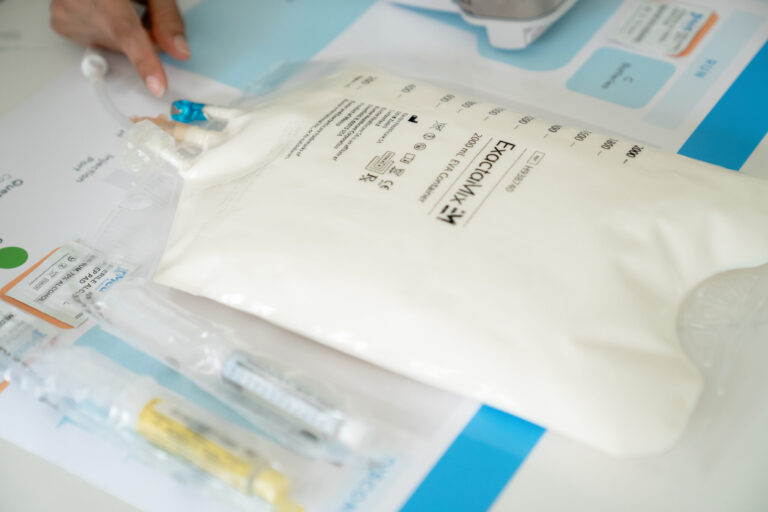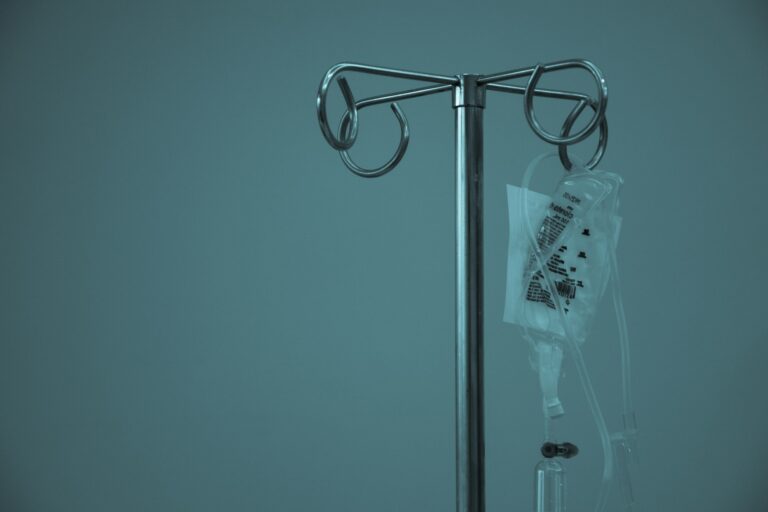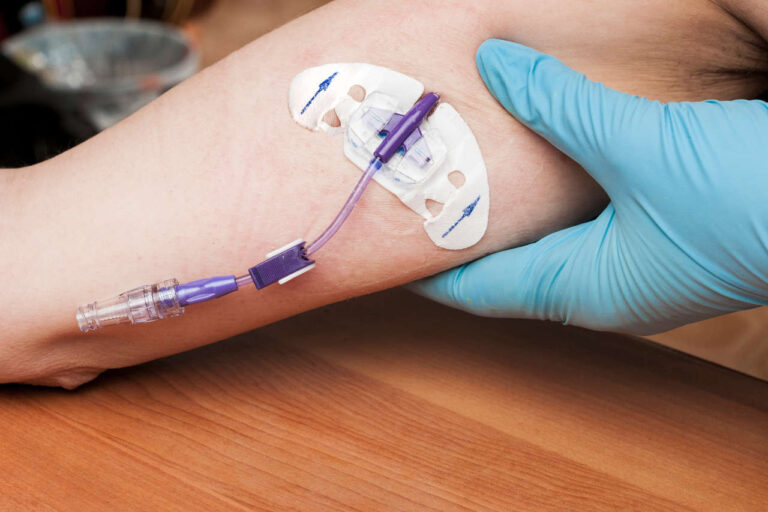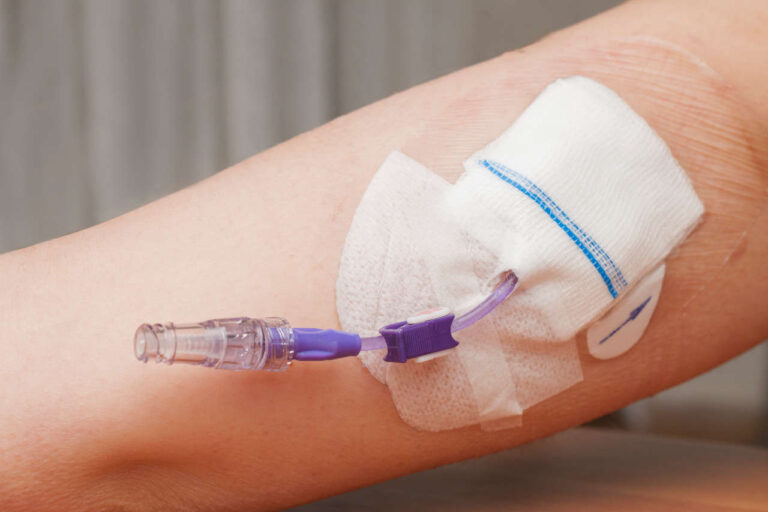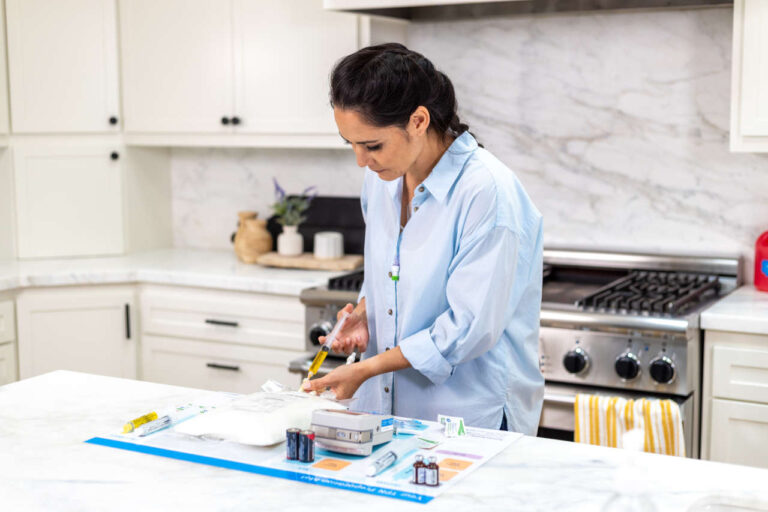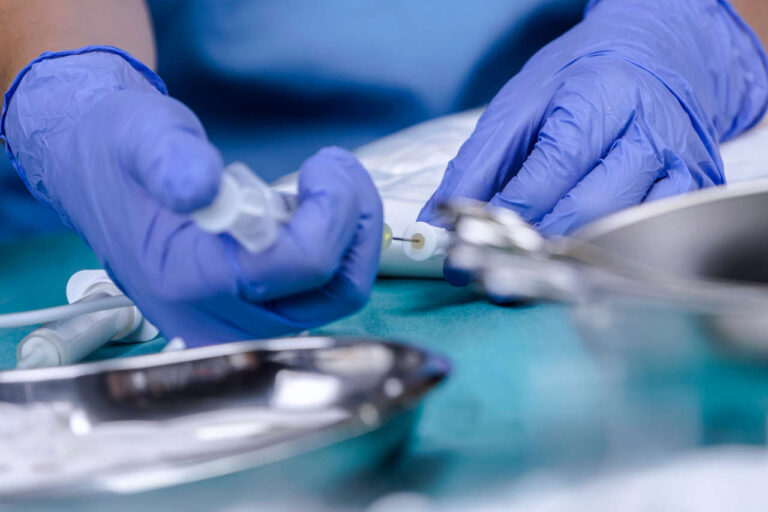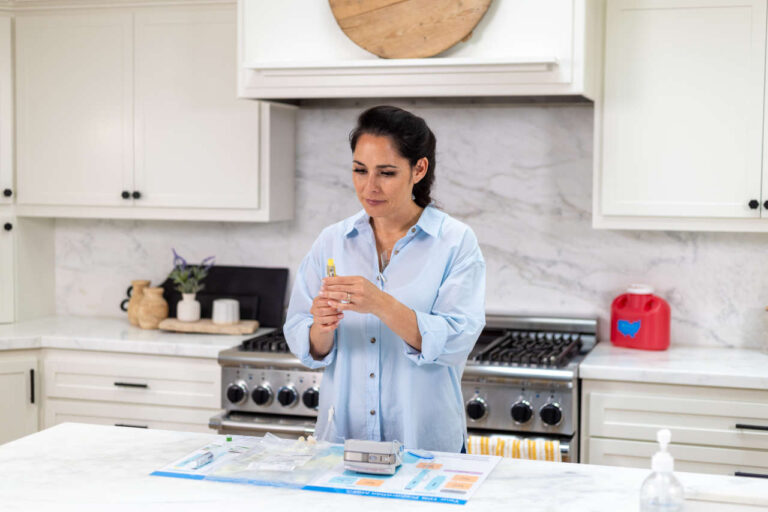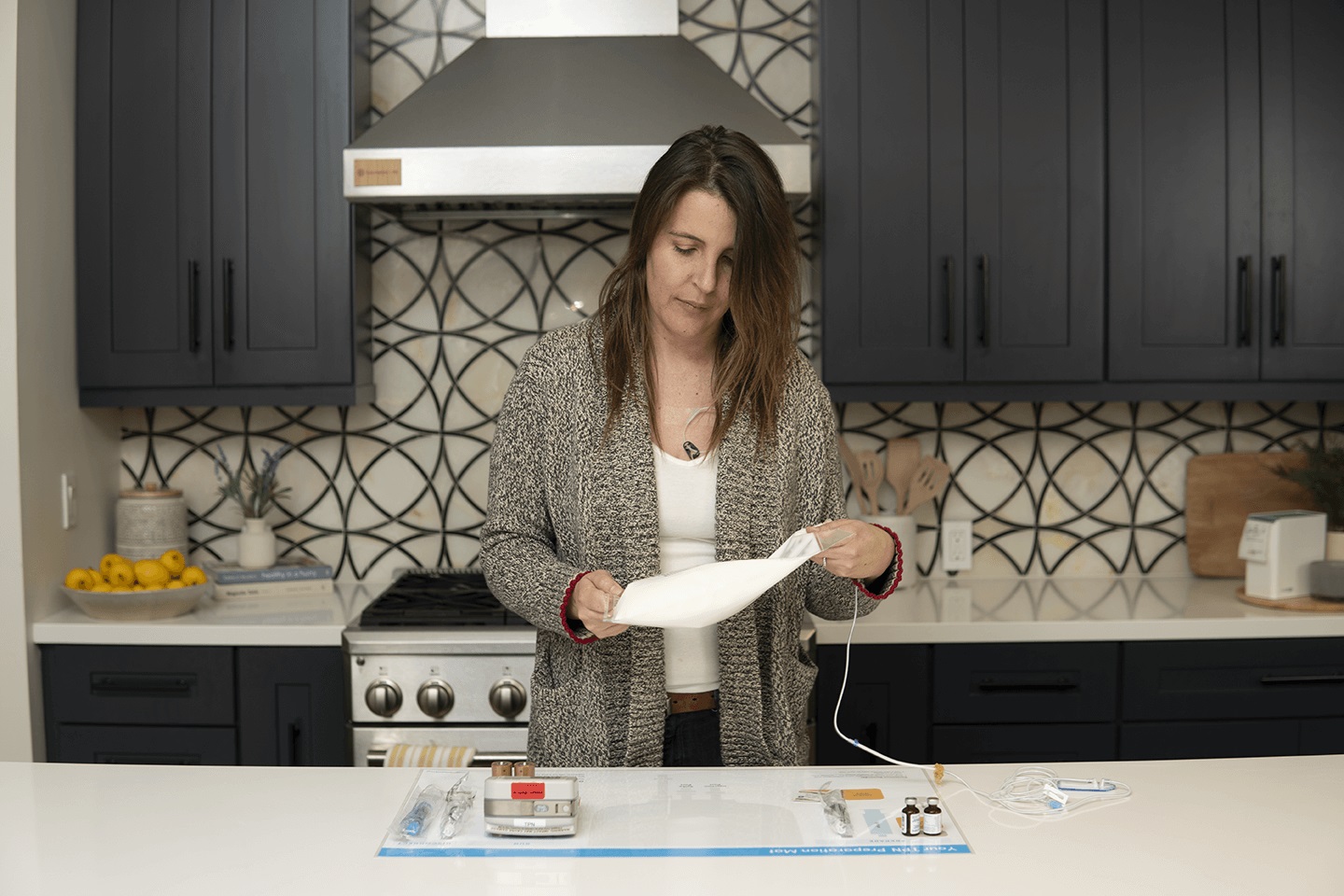
Cơ thể bạn cần một sự cân bằng nhất định giữa các chất dinh dưỡng và chất lỏng để hoạt động bình thường. Dinh dưỡng không đầy đủ có thể gây hại cho sức khỏe, gây mất cân bằng nội tiết tố và suy giảm hệ miễn dịch, cùng nhiều rối loạn khác. Không phải ai cũng có thể hấp thụ các chất dinh dưỡng thiết yếu thông qua thực phẩm. Đây chính là lúc liệu pháp TPN có thể được cân nhắc.
Luôn luôn có sẵn
Kho đầy đủ các loại dịch truyền tĩnh mạch, sẵn sàng phục vụ bạnNhững người không thể ăn hoặc tiêu hóa thức ăn sẽ cần liệu pháp TPN để đáp ứng nhu cầu dinh dưỡng hàng ngày. Việc phụ thuộc vào việc truyền dịch thường xuyên có thể là một thách thức. Tuy nhiên, việc tìm hiểu thêm về nó có thể giúp quá trình này dễ dàng hơn. Dưới đây là hướng dẫn đánh giá đầy đủ về liệu pháp truyền dịch TPN dành cho những người mới bắt đầu.
TPN là gì?
Dinh dưỡng qua đường tĩnh mạch toàn phần (TPN) bao gồm việc cung cấp các chất dinh dưỡng thiết yếu trực tiếp vào máu thông qua đường truyền tĩnh mạch. Phương pháp này còn được gọi là nuôi ăn tĩnh mạch hoặc nuôi ăn dinh dưỡng qua đường tĩnh mạch.
Liệu pháp TPN cho phép bệnh nhân không có đường tiêu hóa (GI) hoạt động bình thường nhận được nguồn dinh dưỡng cần thiết để sống sót. Liệu pháp này cung cấp tất cả các chất dinh dưỡng mà cơ thể bạn không thể hấp thụ thông qua chế độ ăn uống thông thường và giúp ngăn ngừa suy dinh dưỡng.
Một túi TPN có chứa những thành phần gì?
MỘT TPN Mỗi túi chứa các chất dinh dưỡng đa lượng và vi lượng cần thiết cho hoạt động của cơ thể. Lượng chính xác của từng chất dinh dưỡng sẽ khác nhau tùy theo từng người. Bác sĩ và dược sĩ có thể xác định lượng này và điều chỉnh công thức dựa trên tình trạng sức khỏe và nhu cầu cá nhân của bạn.
Liệu pháp TPN thường bao gồm sự kết hợp của các chất dinh dưỡng sau:
- Chất béo
- Nước
- Protein
- Khoáng chất
- Vitamin
- Chất điện giải
- Carbohydrate
Mỗi thành phần này đều đóng vai trò quan trọng trong việc duy trì sức khỏe. Ví dụ, chất điện giải hỗ trợ quá trình trao đổi chất, trong khi protein nuôi dưỡng cơ bắp. Nhìn chung, chúng cung cấp năng lượng cần thiết để bạn tồn tại và khỏe mạnh.
Ai cần điều trị bằng TPN?
Truyền dịch TPN có thể bổ sung cho việc nuôi ăn qua ống thông hoặc là nguồn dinh dưỡng thay thế cho những người không thể ăn hoặc hấp thụ thức ăn. Nhiều bệnh nhân suy dinh dưỡng trong các cơ sở phục hồi chức năng và chăm sóc sức khỏe dài hạn có thể được hưởng lợi từ hình thức trị liệu này trong quá trình hồi phục.
Những người khác có thể cần bổ sung TPN do các tình trạng sức khỏe phức tạp khiến đường tiêu hóa của họ không hoạt động bình thường. Các tình trạng này bao gồm:
- Bệnh ung thư
- Bệnh Crohn
- Suy ruột
- Viêm loét đại tràng
- Tắc ruột
- Viêm tụy nặng
- Hội chứng ruột ngắn hoặc bệnh thiếu máu cục bộ ruột
Bất kỳ ai không thể hấp thụ đủ calo qua đường tiêu hóa đều có thể đủ điều kiện sử dụng liệu pháp TPN.
Liệu pháp này có thể chỉ mang tính tạm thời đối với một số bệnh nhân, chẳng hạn như những người đang hồi phục sau phẫu thuật. Liệu pháp này có thể được thực hiện tại bệnh viện. Đối với những bệnh nhân khác, đây có thể là liệu pháp điều trị suốt đời. Những bệnh nhân này có thể được truyền dịch tại nhà và tự thực hiện sau một vài buổi đào tạo từ các điều dưỡng viên được chứng nhận.
TPN dành cho thanh thiếu niên và trẻ em
Các phương pháp điều trị TPN cũng phổ biến trong số trẻ em và thanh thiếu niênNhiều bệnh nhân trẻ tuổi được điều trị bằng liệu pháp này mắc hội chứng ruột ngắn hoặc các bệnh lý đường ruột khác. Một số bệnh nhân được điều trị bằng TPN cũng có thể đang trong danh sách chờ ghép ruột.
Tuy nhiên, thích nghi với cuộc sống với TPN sẽ khó khăn hơn nhiều khi bạn còn trẻ. Thanh thiếu niên đang được điều trị bằng TPN thường quan tâm nhiều hơn đến hình ảnh cơ thể của mình, và việc điều trị có thể ảnh hưởng đến sự tự tin của họ. Thậm chí, họ có thể quyết định ngừng điều trị TPN sớm hoặc từ chối điều trị.
Đối với bệnh nhi, chúng tôi khuyến khích bạn liên hệ với các nhóm hỗ trợ và chuyên gia. Có rất nhiều tổ chức phi lợi nhuận sẵn sàng hỗ trợ các gia đình có con em thuộc diện TPN.
Dịch truyền tĩnh mạch có sẵn đầy đủ
Nguồn cung cấp đáng tin cậy cho việc chăm sóc không bị gián đoạnQuản trị TPN
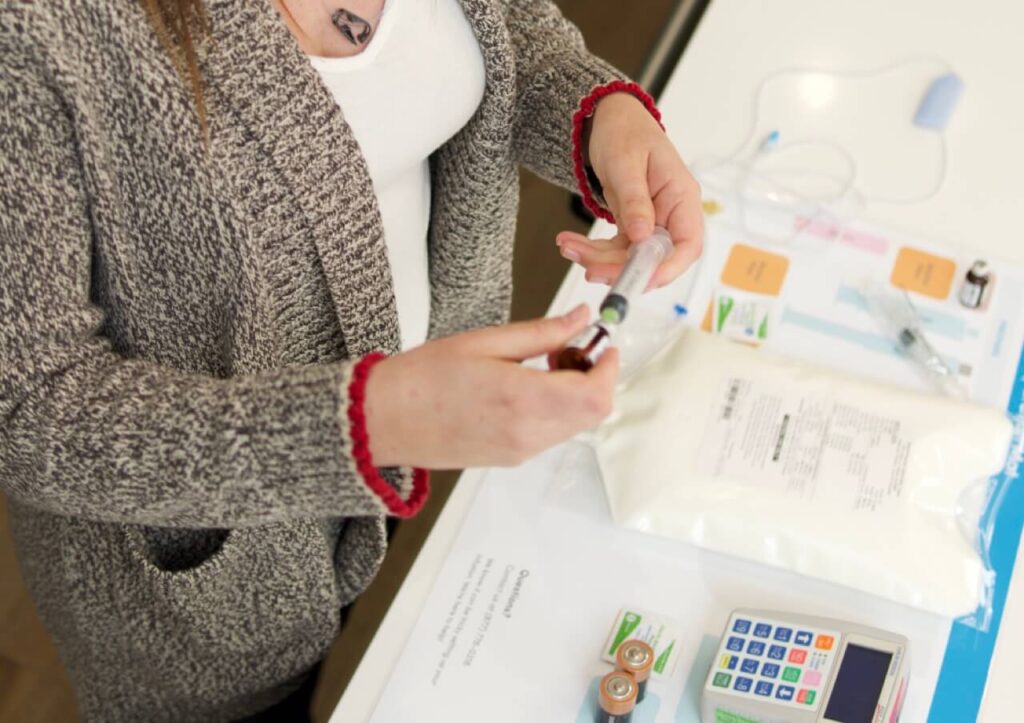
Việc sử dụng TPN tương tự như bất kỳ liệu pháp truyền tĩnh mạch nào khác. Công thức TPN được cung cấp dưới dạng dung dịch lỏng đựng trong túi. Một y tá được đào tạo sẽ hướng dẫn bạn cách pha chế và thực hiện liệu pháp.
Liệu pháp TPN có thể kéo dài từ 10 đến 24 giờ. Thời gian truyền dịch hàng ngày có thể rút ngắn sau nhiều buổi. Hầu hết bệnh nhân chọn điều trị bằng TPN vào ban đêm khi đang ngủ.
Việc thay băng đòi hỏi kỹ thuật vô trùng để ngăn ngừa nhiễm trùng. Vì vậy, y tá phải thay băng hàng tuần.
Quản lý TPN tại nhà
Ngoài ra, bạn có thể tự tiêm TPN. Liệu pháp TPN an toàn và dễ dàng nếu bạn tuân thủ một số hướng dẫn và thực hiện trong môi trường sạch sẽ. Dưới đây là hướng dẫn từng bước để quản lý TPN bản thân bạn.
Bước 1: Chuẩn bị môi trường vô trùng
Bước đầu tiên là chuẩn bị môi trường vệ sinh để ngăn ngừa nhiễm trùng. Bạn có thể thực hiện việc này bằng cách khử trùng khu vực đặt thiết bị và rửa tay bằng xà phòng diệt khuẩn.
Bước 2: Chuẩn bị túi TPN
Lấy túi TPN ra khỏi tủ lạnh và kiểm tra kỹ lưỡng trước khi bắt đầu liệu trình TPN. Đảm bảo túi có đúng thành phần và chưa hết hạn. Màu sắc phải đồng đều, không có hạt mỡ hoặc vẩn đục.
Đặt nó lên khăn giấy sạch và để yên trong hai đến ba giờ cho đến khi nó đạt đến nhiệt độ phòng. Tiếp tục điều trị bằng công thức lạnh có thể khiến bạn đau đầu và khó chịu.
Bước 3: Thu thập vật dụng của bạn
Chuẩn bị tất cả các thiết bị TPN cần thiết và đặt chúng vào khu vực vô trùng để thực hiện truyền dịch. Dưới đây là danh sách các vật dụng bạn cần:
- Ống tiêm
- Thuốc bổ tổng hợp theo toa
- Găng tay y tế
- Mũ sát trùng
- ống truyền tĩnh mạch
- Bơm truyền dịch
- Khăn lau cồn
- Ống tiêm nước muối và heparin đã được nạp sẵn
- Thùng đựng vật sắc nhọn
Bước 4: Thêm Multivitamin vào túi TPN
Nếu bác sĩ kê đơn thuốc bổ sung vitamin tổng hợp, bạn phải thêm chúng vào túi trước khi bắt đầu liệu pháp TPN. Kiểm tra nhãn để đảm bảo đúng nhãn và chưa hết hạn. Hút dung dịch vào ống tiêm và đổ hết vào túi TPN.
Bước 5: Đặt ống truyền tĩnh mạch
Trước khi bắt đầu điều trị bằng TPN, bạn cần mồi ống truyền dịch. Mồi là quá trình chuyển dịch trong túi TPN vào đường ống truyền dịch bằng bơm.
Tất cả những gì bạn cần làm là gắn một đầu ống vào túi TPN. Bật bơm đi kèm, chọn tính năng ống mồi và chờ dung dịch chảy đầy ống truyền tĩnh mạch.
Dịch truyền tĩnh mạch của bạn, luôn có sẵn
Hàng tồn kho đầy đủ, truy cập dễ dàngBước 6: Xả sạch đường ống trung tâm
Trước khi điều trị bằng TPN, bạn cần rửa sạch đường ống trung tâm của ống thông để loại bỏ thuốc còn sót lại từ các lần truyền trước. Lau sạch đầu ống thông bằng bông tẩm cồn trong 10-15 giây. Cắm ống tiêm nước muối sinh lý vào đầu ống thông và rửa sạch đường ống. Vứt bỏ ống tiêm đã sử dụng sau đó.
Bước 7: Bắt đầu truyền dịch
Nối đầu còn lại của ống truyền tĩnh mạch vào đầu nối ống thông. Cố định đầu nối và khởi động bơm để dung dịch TPN đi vào cơ thể.
Bước 8: Ngắt kết nối ống truyền dịch
Khi quá trình truyền dịch hoàn tất, máy bơm sẽ báo động. Tắt thiết bị và cẩn thận ngắt kết nối ống thông khỏi ống thông.
Bước 9: Xả sạch đường ống trung tâm
Sau khi hoàn tất liệu trình TPN, bạn phải rửa lại đường truyền trung tâm bằng dung dịch muối sinh lý và dung dịch heparin. Chà nắp IV bằng cồn trong ít nhất 15 giây. Rửa lại đường truyền bằng dung dịch muối sinh lý sau khi sử dụng bằng phương pháp nhấn tạm dừng. Dùng khăn lau cồn để chà lại nắp trước khi rửa bằng heparin bằng phương pháp nhấn tạm dừng. Chà nắp một lần nữa bằng khăn lau cồn.
Bước 10: Cố định Đường ống Trung tâm và Vứt bỏ Vật tư
Sau khi hoàn tất liệu trình TPN, hãy cố định đường truyền trung tâm bằng nắp đậy có chứa cồn. Vứt bỏ tất cả vật tư đã sử dụng. Vứt ống tiêm có kim tiêm vào thùng đựng vật sắc nhọn và túi TPN vào túi rác.
Lợi ích của TPN
Liệu pháp TPN mang lại nhiều lợi ích bằng cách cung cấp cho cơ thể bạn các dưỡng chất cần thiết. Một số lợi ích bao gồm:
- Cung cấp nước
- Tăng cường mức độ sức mạnh
- Duy trì mức năng lượng cao
- Cho phép bệnh nhân chữa lành nhanh hơn
Đối với trẻ em và thanh thiếu niên, TPN còn có lợi ích là cung cấp cho trẻ các chất dinh dưỡng cần thiết để tránh tình trạng chậm phát triển.
Tác dụng phụ của TPN
TPN không phải là phương pháp điều trị không có rủi ro. Giống như bất kỳ phương pháp điều trị y tế nào khác, nó có những rủi ro nhỏ mà một số bệnh nhân có thể gặp phải. Một số Tác dụng phụ của TPN bao gồm:
- Cục máu đông
- Bệnh xương
- Rối loạn chức năng gan
- Mất cân bằng dinh dưỡng
- Nhiễm trùng ống thông và nhiễm trùng huyết
- Bất thường về glucose, bao gồm tăng đường huyết và hạ đường huyết
Nhiễm trùng liên quan đến ống thông là tác dụng phụ phổ biến nhất. Trong khi đó, rối loạn chức năng gan và bệnh xương phổ biến hơn ở những bệnh nhân điều trị lâu dài. Bạn có thể giảm nguy cơ gặp phải hầu hết các tác dụng phụ này bằng cách sử dụng liệu pháp TPN dưới sự giám sát của chuyên gia được cấp phép trong môi trường sạch sẽ.
Nhận điều trị chuyên nghiệp TPN với Nhà thuốc chuyên khoa AmeriPharma®
Bạn có thể nhận được liều dinh dưỡng hàng ngày từ các y tá được chứng nhận tại Nhà thuốc Chuyên khoa AmeriPharma®. Chúng tôi cung cấp truyền dịch tại nhà các phương pháp điều trị và dịch vụ TPN dành cho những người không thể hấp thụ chất dinh dưỡng thông qua chế độ ăn uống.
Nhà thuốc chuyên khoa được chứng nhận URAC của chúng tôi hoạt động tại hơn 40 tiểu bang Hoa Kỳ. Chúng tôi giúp cuộc sống dễ dàng hơn với liệu trình TPN nhờ sự phối hợp dịch vụ toàn diện, bao gồm: hỗ trợ đồng thanh toán và hỗ trợ 24/7. Liên hệ với chúng tôi bây giờ để nói chuyện với một chuyên gia truyền dịch và bắt đầu với liệu pháp TPN của bạn.
Ghé thăm chúng tôi blog để tìm hiểu thêm về dịch truyền TPN và các phương pháp điều trị khác cho các tình trạng sức khỏe phức tạp.

